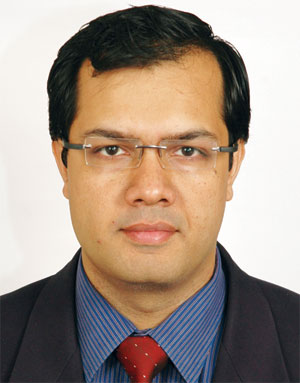People-centric e-Governance
Reduce Discretionary Power, Reduce Corruption
·
No scheme or regulation without
e-governance to support the implementation
·
Analytics driven policy making to
avoid biases due to vote-bank politics
·
All government files will be
created and managed online, with all file notings kept public
·
Maintaining corruption heat-map by
department online, based on SMS feedback
from citizens
Many regulations
and schemes are passed without much intention of actually implementing them
properly on ground. The outcome of such regulations and schemes is that the
benefit rarely reaches the intended sections of the society and is usurped by
middlemen and corrupt politicians.
It is
therefore imperative to implement e-governance solutions for every new scheme
and for every new regulation, such that the targeted sections of the society
get benefited.
Hence, if
regularization of colonies is done, it should be preceded by a system of identifying
all existing residents and publishing their information online, along with maps
of what they own and their photographs. This would ensure that their rights are
safeguarded such that land-mafia, supported by corrupt politicians, does not usurp
the newly regularized properties from these underprivileged sections of the
society.
Similarly,
data analytics will be used to determine policies such as the usefulness of the
BRT, discriminatory and monopolistic power tariffs, effectiveness of government
schools etc.
Governance
Day to Day Functioning
Many government decisions are taken,
hidden from public scrutiny. The decisions and the files are kept away from the
public and the rationale for taking the decisions are never discussed in
public.
From petty decisions that inconvenience
the public, such as replacing perfectly good paving stones every 6-7 months
without any reason, and the old paving stones being left behind carelessly on
the road, leading to accidents, especially of 2-wheelers, are matters of
criminal negligence.
To prevent such arbitrary decision making,
Delhi Government should put all working files online, along with the file notings.
Delhi government should also put up a website for
reporting arbitrary civil works such as re-paving perfectly fine roads, replacing
paving stones, digging up newly laid roads, water not available, unauthorized
constructions, squatting on pavements etc. Each complaint will be tracked with
a complaint number and will be brought to a logical conclusion.
Corruption Heatmap
Very often, some departments are known
to have significantly higher corruption levels. Each department and its offices
will be given code that will be prominently displayed at that office. Citizens
who believe the department to be corrupt and/or had a corrupt office to deal
with, can send an SMS with the department code to a certain number.
Departments with the highest such SMS’s
will be marked with red and those with the lowest such SMS’s will be marked in
green and other departments that fall in between will have a shade of colour
between red and green, depending on the number of complaint SMS’s that come in.
Such a system will help in reducing the
overall corruption envelope of governance.
Police and Security
Security of Women and safeguards from
police excesses
The weaker sections of the society are the
ones who are worst affected by poor security and poor policing. In many cases,
the citizens are more afraid of the police.
Therefore Delhi needs to bring the following
two key systems:
·
Create a Pre-FIR system where
citizens can enter their police complaint from any cybercafé or smartphone and
would then merely need to go to the police station to convert the pre-FIR into either
a formal complaint or an FIR, based on whether the offence is cognizable or
non-cognizable. This would reduce the harassment of ordinary citizens who faces
trivial issues such as reporting of lost phones, reporting of road accidents
etc and who have to end up being in a police station for hours
·
The statistics of how many
pre-FIR’s are converted into FIR or complaints would give an indication of the
responsiveness of the police, especially for the weaker sections of the
society.
·
Create a system by which a low-cost
electronic device can be worn by women that can be triggered to alert a special
rapid force to respond to the help requested by the woman.
·
The special rapid force will be
provided by a helicopter for effective response and for even following moving
vehicles if necessary
·
GPS-tag all known sexual
offenders and violent criminals so that women and children can find if they are
in the proximity so such offenders
·
Similar systems will be
provided to household help who can report abuses by their employers through such
systems.
Make Delhi a Safe Delhi, a Vibrant Delhi
Free Business and Educational Software and Cloud Computing
To support small businesses and students
We all know that technology is critical for
the success of businesses. However, the software and computer costs are
prohibitively high for such businesses.
Delhi Government should provide Free and Open Source
software to such small businesses to make them competitive and give them access
to public computing resources to reduce their hardware costs.
Similar Free and Open Source software will
be provided to students to help them be prepared for the jobs that demand basic
knowledge of computers

 Dr Jaijit Bhattacharya
Dr Jaijit Bhattacharya